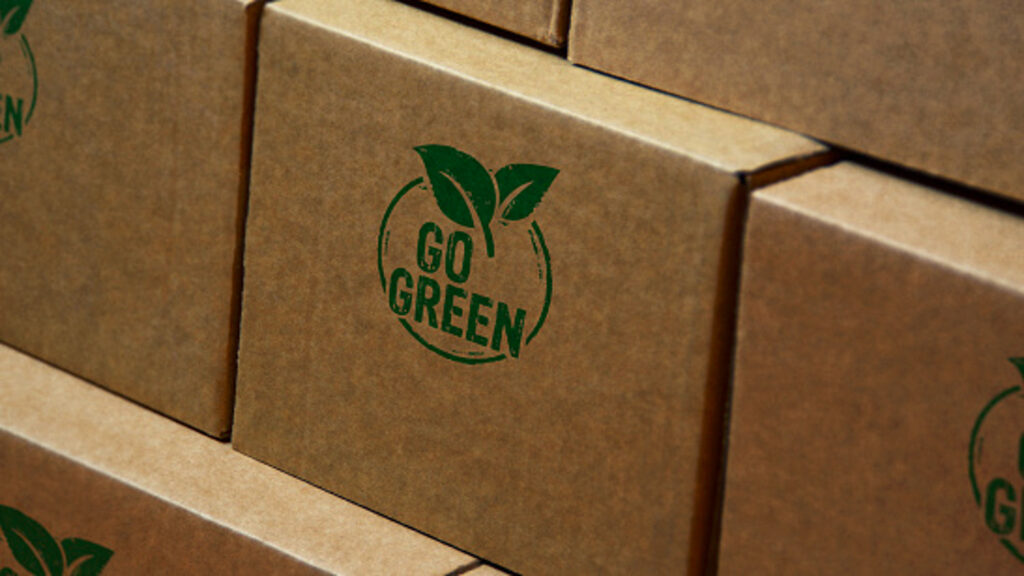Innovation around sustainable design and manufacturing has engrossed Stephen Holmes this issue, but he reckons it’s a product at the less flashy end of the spectrum that could have the biggest impact: packaging
Quick! Name the first ‘sustainable product’ that comes to mind. Was it an electric car? An electric bike? One of those eVTOL planes, the ones that are announced on a near-weekly basis, and that I swear must be some sort of Ponzi scheme?
We’re living through another age of electrification that is fuelling transport development, buoyed by sensors, simulation and cloud computing. However, the development that came to my mind was decidedly less sexy than anything that comes on wheels.
If I’m completely honest, it was a cardboard box. Now, hear me out: online retail has changed not only how we buy products, but also how they’re delivered to our homes and workplaces. This, in turn, is driving innovation when it comes to cardboard boxes.
With increasing maturity, the days of receiving a stapler in a box big enough to house a microwave are now consigned to history
Gone are the days when packaging was designed merely to be an extension of a product’s advertising, handled by the consumer carrying the item from the store shelf to their home. Gone are the mountains of polystyrene blobs that encase a box within a box.
As with electric vehicles, new innovations have emerged, built around lightweighting, sustainable materials and carbon reduction.
The eco-materials list that you will find in the pages of this issue could easily have been double its current length, simply by including all the new materials used in the packaging industry. They range from foam replacements made from fungi and shock-absorbent wood pulps, to insulating sheep-wool packing and polymers created from a mixture of coffee waste and some smart, biodegradable resins.
Pedals and paper bags
The ecosystem for getting new products to the end user responsibly is booming. Even cycle delivery services such as Pedal Me are upending traditional ideas around what can be transported on a bike. The company’s social media feeds are a revelation when it comes to discovering some of the more unexpected loads that can now be shifted by cargo bike: sofas, beer barrels, a person’s household belongings in their entirety.
Pedal Me’s network is enabled by some excellent two-wheeled hardware, clever software and well-thought-out processes around operator training.
At the other end of the scale, driven by the likes of Amazon, packaging is going minimalist. Such is the increasing maturity of online retail that the days of receiving a stapler in a box big enough to house a microwave oven are now consigned to history. By comparison, this morning, I received a delivery that consisted of little more than a paper bag holding the naked product inside.
Such delivery methods – even ones offering more protection – are impacting the design of the products inside.
How products stand up to being shipped by courier is now a design consideration in the earliest stages of the development process, not only helping to decide how products can be packed into as small a container as possible, but even how wall thicknesses might survive a tumble in a giant mail processing facility or a rough throw into the back of a delivery van.
More products are being shaped to fit standard package sizes, which themselves are being defined to fit through letterboxes or into pick-up lockers.

Considerate design
Assembly on delivery at least means more can be crammed into a package, but then product joins, connectors and preferably toolless construction come into play.
Already we’re seeing software like Zea3D and Cadasio enabling product teams to use CAD models to quickly create instructions that direct the end user on how to put the product together without a full-blown meltdown and a handful of leftover parts.
It’s quite a task to design something robust enough to stand up to being dumped behind a wheelie bin for six hours straight during a torrential rainstorm, but can also be recycled easily, uses as little material as possible and is still cost-effective.
As usual, there’s a lot of amazing design and engineering taking place out of the spotlight to help reduce the environmental impact of products. Hopefully, this issue has helped highlight some of these, and will inspire you to look at your own designs and processes. And maybe some time soon, when people are asked to name a sustainable product, your product will be the first one that springs to mind.
This article first appeared in DEVELOP3D Magazine
DEVELOP3D is a publication dedicated to product design + development, from concept to manufacture and the technologies behind it all.
To receive the physical publication or digital issue free, as well as exclusive news and offers, subscribe to DEVELOP3D Magazine here






